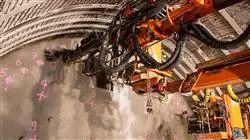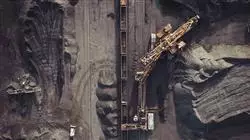University certificate
Scientific endorser

The world's largest faculty of engineering”
Introduction to the Program
A thorough and intensive study of the differential characteristics of soils and rocks, in relation to soil behavior, bearing capacity or strength"

The program is academically designed to provide in-depth knowledge, starting from advanced concepts already acquired in the world of Civil Engineering and from a practical application point of view, to the most important geotechnical aspects that can be found in different types of civil engineering works.
The content ranges from the specific behavior of soils and rocks, with a constant differentiation of both types of terrain throughout all the topics, to their direct application in foundations and structures.
The program, divided into 10 modules, has a syllabus that mixes some of these modules that have more applied theory (such as those related to soil behavior models, the necessary requirements for a good identification of soils and rocks or the interaction of the soil with seismic disturbances), with others that have an emphasis on practical analysis. The knowledge acquired on the behavior of the soil and its stress-strain states in this first part is applied to the usual structures of Geotechnical Engineering: slopes, walls, screens, tunnels, etc.
Geotechnical engineering and its application in foundations and structures is present in many civil engineering projects and works. This path, which goes from compaction and seismic considerations in linear works to the execution of tunnels and galleries, is the one that is carried out with the case studies addressed in each of the topics. It is a priority to ensure that these case studies are current and relevant. This allows for an original and application-oriented analysis of the theoretical concepts developed throughout the course.
Therefore, the Professional master’s degree in Geotechnical and Foundation Engineering integrates the most complete and innovative educational program on the current market in terms of knowledge and the latest available technologies, in addition to encompassing all sectors or parties involved in this field. In addition, the program consists of exercises based on real cases of situations currently managed or previously faced by the teaching team.
All this, through a 100% online program that allows the student to take the course wherever and whenever they want. All they will need is a device with internet access, and they will be able to access a universe of knowledge that will be the main basis for engineers to position themselves in a sector that is increasingly demanded by companies in various industries.
An intensive study of the contents and techniques of Geotechnical Engineering and their application to foundations and structures"
This Professional master’s degree in Geotechnical and Foundation Engineering contains the most complete and up-to-date program on the market. Its most notable features are:
- Practical cases presented by experts in Civil Engineering and Geotechnics
- The graphic, schematic, and practical contents with which they are created, provide scientific and practical information on the disciplines that are essential for professional practice
- Practical exercises where the self-assessment process can be carried out to improve learning
- Special emphasis on innovative methodologies
- Theoretical lessons, questions to the expert, debate forums on controversial topics, and individual reflection assignments
- Content that is accessible from any fixed or portable device with an Internet connection
Acquire the working skills required to develop the initial site survey and valuations that are essential for the creation of adequate and safe structures"
The program’s teaching staff includes professionals from the sector who contribute their work experience to this program, as well as renowned specialists from leading societies and prestigious universities.
Its multimedia content, developed with the latest educational technology, will provide the professional with situated and contextual learning, i.e., a simulated environment that will provide immersive education programmed to learn in real situations.
This program is designed around Problem-Based Learning, whereby the professional must try to solve the different professional practice situations that arise during the academic year. For this purpose, the professional will be assisted by an innovative interactive video system created by renowned and experienced experts with extensive experience.
A 100% online refresher program that will allow you to balance your studies with the rest of your daily activities"

Make the most of the opportunity and take the step to get up to date on the latest developments in Geotechnical and Foundation Engineering"
Why study at TECH?
TECH is the world’s largest online university. With an impressive catalog of more than 14,000 university programs available in 11 languages, it is positioned as a leader in employability, with a 99% job placement rate. In addition, it relies on an enormous faculty of more than 6,000 professors of the highest international renown.

Study at the world's largest online university and guarantee your professional success. The future starts at TECH”
The world’s best online university according to FORBES
The prestigious Forbes magazine, specialized in business and finance, has highlighted TECH as “the world's best online university” This is what they have recently stated in an article in their digital edition in which they echo the success story of this institution, “thanks to the academic offer it provides, the selection of its teaching staff, and an innovative learning method aimed at educating the professionals of the future”
A revolutionary study method, a cutting-edge faculty and a practical focus: the key to TECH's success.
The most complete study plans on the university scene
TECH offers the most complete study plans on the university scene, with syllabuses that cover fundamental concepts and, at the same time, the main scientific advances in their specific scientific areas. In addition, these programs are continuously being updated to guarantee students the academic vanguard and the most in-demand professional skills. In this way, the university's qualifications provide its graduates with a significant advantage to propel their careers to success.
TECH offers the most comprehensive and intensive study plans on the current university scene.
A world-class teaching staff
TECH's teaching staff is made up of more than 6,000 professors with the highest international recognition. Professors, researchers and top executives of multinational companies, including Isaiah Covington, performance coach of the Boston Celtics; Magda Romanska, principal investigator at Harvard MetaLAB; Ignacio Wistumba, chairman of the department of translational molecular pathology at MD Anderson Cancer Center; and D.W. Pine, creative director of TIME magazine, among others.
Internationally renowned experts, specialized in different branches of Health, Technology, Communication and Business, form part of the TECH faculty.
A unique learning method
TECH is the first university to use Relearning in all its programs. It is the best online learning methodology, accredited with international teaching quality certifications, provided by prestigious educational agencies. In addition, this disruptive educational model is complemented with the “Case Method”, thereby setting up a unique online teaching strategy. Innovative teaching resources are also implemented, including detailed videos, infographics and interactive summaries.
TECH combines Relearning and the Case Method in all its university programs to guarantee excellent theoretical and practical learning, studying whenever and wherever you want.
The world's largest online university
TECH is the world’s largest online university. We are the largest educational institution, with the best and widest online educational catalog, one hundred percent online and covering the vast majority of areas of knowledge. We offer a large selection of our own degrees and accredited online undergraduate and postgraduate degrees. In total, more than 14,000 university degrees, in eleven different languages, make us the largest educational largest in the world.
TECH has the world's most extensive catalog of academic and official programs, available in more than 11 languages.
Google Premier Partner
The American technology giant has awarded TECH the Google Google Premier Partner badge. This award, which is only available to 3% of the world's companies, highlights the efficient, flexible and tailored experience that this university provides to students. The recognition as a Google Premier Partner not only accredits the maximum rigor, performance and investment in TECH's digital infrastructures, but also places this university as one of the world's leading technology companies.
Google has positioned TECH in the top 3% of the world's most important technology companies by awarding it its Google Premier Partner badge.
The official online university of the NBA
TECH is the official online university of the NBA. Thanks to our agreement with the biggest league in basketball, we offer our students exclusive university programs, as well as a wide variety of educational resources focused on the business of the league and other areas of the sports industry. Each program is made up of a uniquely designed syllabus and features exceptional guest hosts: professionals with a distinguished sports background who will offer their expertise on the most relevant topics.
TECH has been selected by the NBA, the world's top basketball league, as its official online university.
The top-rated university by its students
Students have positioned TECH as the world's top-rated university on the main review websites, with a highest rating of 4.9 out of 5, obtained from more than 1,000 reviews. These results consolidate TECH as the benchmark university institution at an international level, reflecting the excellence and positive impact of its educational model.” reflecting the excellence and positive impact of its educational model.”
TECH is the world’s top-rated university by its students.
Leaders in employability
TECH has managed to become the leading university in employability. 99% of its students obtain jobs in the academic field they have studied, within one year of completing any of the university's programs. A similar number achieve immediate career enhancement. All this thanks to a study methodology that bases its effectiveness on the acquisition of practical skills, which are absolutely necessary for professional development.
99% of TECH graduates find a job within a year of completing their studies.
Professional Master's Degree in Geotechnics and Foundations
.
Due to its extensive field of application, geotechnical engineering stands out as one of the most important areas of engineering today, having its processes, studies and procedure a great adaptation in front of a long list of construction projects of various categories. This situation has generated a significant increase in the labor demand for professionals specialized in this field. Understanding the need for academic updating that accompanies the growing interest in accessing this important occupational field, at TECH Global University we have prepared our Professional Master's Degreein Geotenics and Foundations. In this postgraduate course, special attention will be paid to the new technologies used in the design of geomechanical stations for the geological-geotechnical testing of a construction site. In addition, it will deepen the modernization of the following aspects: the knowledge of the various electrical and seismic methods of geophysical investigation and the identification of the various calculations and studies developed for the understanding of the seismic hazard of a terrain.
Study an online Master's degree in geotechnics and foundations.
The large number of tests, studies and tests developed within the area of geotechnical engineering make this specialty one of the most demanding fields with respect to the level of knowledge of its professionals. In our Master's program you will acquire the necessary skills, knowledge and tools to address the various scenarios that accompany the development of practices in this area. Similarly, in this postgraduate program you will delve into the updating of the following topics: the identification of the implications or possibilities of intervention present in the different methods of soil compaction and the knowledge of the particularities to be considered in the processes of land improvement through the use of injection techniques of high-pressure mixtures.







